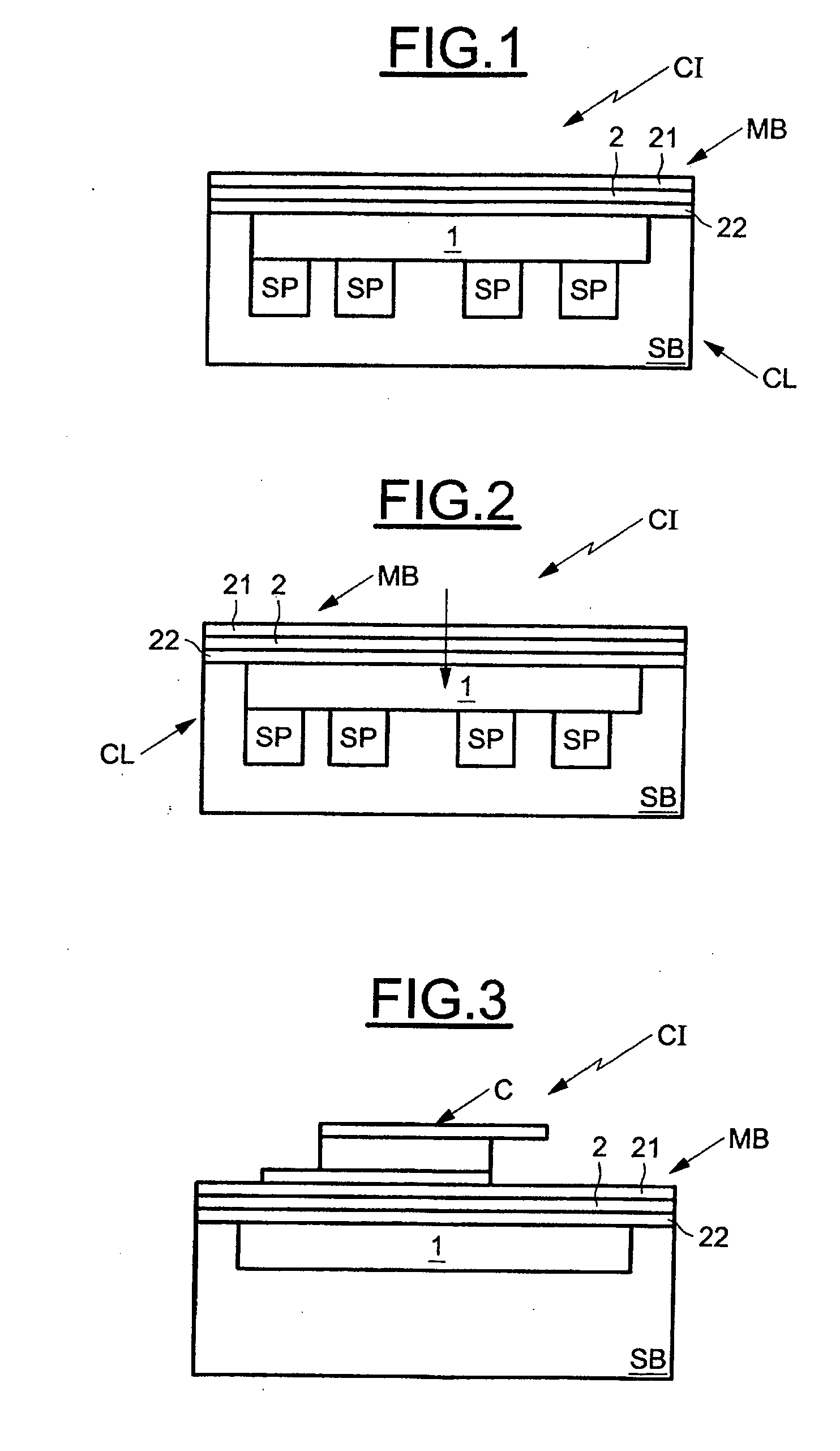Process for obtaining a thin, insulating, soft magnetic film of high magnetization
a soft magnetic film and granular technology, applied in the direction of inductance, components, electrical equipment, etc., can solve the problems of oxidation of the film, unable to achieve high magnetization, and nanocrystalline (ferromagnetic) phase, so as to maximize the value of the inductance, reduce the loss of magnetic energy, and achieve low magnetic loss
- Summary
- Abstract
- Description
- Claims
- Application Information
AI Technical Summary
Benefits of technology
Problems solved by technology
Method used
Image
Examples
Embodiment Construction
[0054] Embodiments of the invention make it possible to obtain a thin, insulating, soft ferromagnetic film of high magnetization from Fe-rich ferromagnetic nanograins immersed in an amorphous substrate and comprises a step of in situ nitriding of the nanograins and a step of in situ selective oxidation of the amorphous matrix.
[0055] Within the context of the invention, the term “Fe-rich nanograins” is understood to mean nanograins having an iron content greater than 85% by weight.
[0056] The process for obtaining such a thin film may be carried out for example according to two variants: the first consists of reactive cathode sputtering of FeX layers in a stream of nitrogen and oxygen; the second consists of selective oxygen diffusion in a heterogeneous compound formed from collection of FeXN / XO aggregates or bilayers.
[0057] The first variant consists of cathode sputtering of FeX layers in a stream of nitrogen and oxygen.
[0058] These films are produced by known techniques, for exa...
PUM
| Property | Measurement | Unit |
|---|---|---|
| diameter | aaaaa | aaaaa |
| volume fraction | aaaaa | aaaaa |
| size | aaaaa | aaaaa |
Abstract
Description
Claims
Application Information
 Login to View More
Login to View More - R&D
- Intellectual Property
- Life Sciences
- Materials
- Tech Scout
- Unparalleled Data Quality
- Higher Quality Content
- 60% Fewer Hallucinations
Browse by: Latest US Patents, China's latest patents, Technical Efficacy Thesaurus, Application Domain, Technology Topic, Popular Technical Reports.
© 2025 PatSnap. All rights reserved.Legal|Privacy policy|Modern Slavery Act Transparency Statement|Sitemap|About US| Contact US: help@patsnap.com


